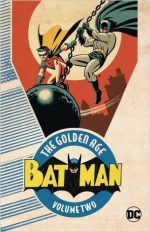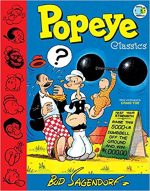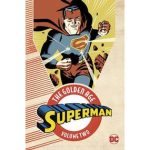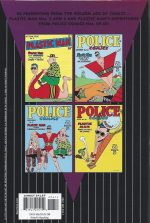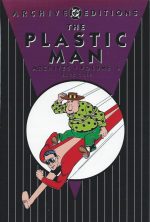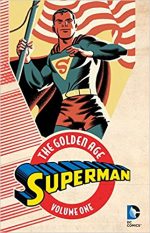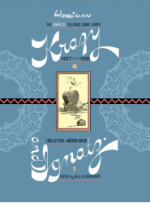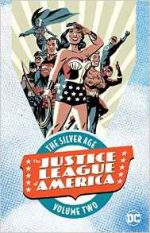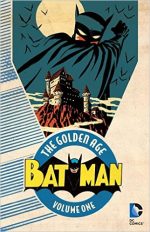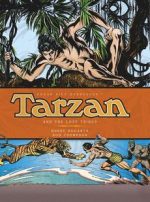
By Burne Hogarth & Rob Thompson (Titan Books)
ISBN: 978-1-78116-320-7
The 1930 and 1940s was an era of astounding pictorial periodical adventure. In the years before television, newspaper strips (and later comicbooks) were the only visually-based home entertainment for millions of citizens young and old and consequently shaped the culture of many nations.
Relatively few strips attained near-universal approval and acclaim. Flash Gordon, Terry and the Pirates and Prince Valiant were in that rarefied pantheon but arguably the most famous was Tarzan.
The full-blown dramatic adventure serial started on January 7th 1929 with Buck Rogers and Tarzan debuting that day. Both were adaptations of pre-existing prose properties and their influence changed the shape of the medium forever.
The 1930s saw an explosion of similar fare, launched with astounding rapidity and success. Not just strips but actual genres were created in that decade, still impacting on today’s comic-books and, in truth, all our popular fiction forms.
In terms of sheer quality of art, the adaptations of Edgar Rice Burroughs’ immensely successful novels starring jungle-bred John Clayton, Lord Greystoke by Canadian commercial artist Harold “Hal†Foster were unsurpassed, and the strip soon became a firm favourite of the masses, supplementing movies, books, a radio show and ubiquitous advertising appearances.
As detailed in previous volumes of this superb oversized (330 x 254 mm), full-colour hardback series, Foster initially quit the strip at the end of a 10-week adaptation of first novel Tarzan of the Apes and was replaced by Rex Maxon. At the insistent urging of Edgar Rice Burroughs, Foster returned when the black-&-white daily expanded to include a lush, full colour Sunday page featuring original adventures.
Maxon was left to capably handle the weekday book adaptations, and Foster crafted the epic and lavish Sunday page until 1936 (233 consecutive weeks). He then left again, for good: moving to King Features Syndicate and his own landmark weekend masterpiece Prince Valiant in the Days of King Arthur – which debuted in February 1937.
Once the four-month backlog of material he had built up was gone, Foster was succeeded by a precociously brilliant 25-year old artist named Burne Hogarth: a graphic visionary whose superb anatomical skill, cinematic design flair and compelling page composition revolutionised the entire field of action/adventure narrative illustration. The galvanic modern dynamism of the idealised human figure in today’s comicbooks can be directly attributed to Hogarth’s pioneering drawing and, in later years, educational efforts.
Burroughs cannily used the increasingly popular comic strip to cross-market his own prose efforts with great effect.
This third titanic tome begins with the spectacularly illustrated ‘Jusko on Hogarth: An Education in Form and Movement’ with the fantasy artist harking back to his childhood comics experiences and influences after which the astounding action and adventure recommence. At this time, Hogarth was sharing the scripting chores veteran collaborator Rob Thompson, having only recently returned to the feature after a dispute with the owners. He had moved to the Robert Hall Syndicate for whom he produced seminal adventure classic Drago and then United Features where he created comedy strip Miracle Jones. During that time away from Tarzan, Hogarth – with Silas Rhodes – also opened the Cartoonists and Illustrators School which later evolved into the School of Visual Arts.
‘Tarzan and N’Ani’ (episodes #875-896; 14th December to 1948 to 9th May 1948) offers more raw drama as Tarzan visits old friend Pangola only to find the chief dead and his Wakamba tribesmen under the thumb of apparent spirit warriors and their White Queen.
A little spirited resistance and dedicated investigation by the ape-Man soon reveals crooked circus performers exploiting and enslaving the natives but before he can confront the villains they take his wife Jane hostage.
N’Ani’s big mistake is thinking her captive is a weak and feeble civilised woman…
With the bad guys and their trained big cats dealt with the excitement briefly subsides, but all too soon the Jungle Lord is tricked into boarding a scientist’s reconditioned atomic submarine and whisked away against his will to uncanny uncharted regions in the year-long epic ‘Tarzan on the Island of Mua-Ao’ (pages #897-947 running from 16th May 1948 to 1st May 1949).
After some Nemo-like subsea escapades Tarzan and his unwelcome companions fetch up on a Polynesian mini lost continent only to be captured by the scientifically advanced but morally barbarous Lahtian people. Their slave-owning totalitarian kingdom is ripe for revolution and after our hero and worthy warriors Soros and Timaru escape from the gladiatorial arena they go about arranging one.
Of course, that first necessitates traversing the savage jungle hinterlands, surviving its ubiquitous feline predators and making peace with the dominant Ornag-Rimba and Thalian tribes…
A minor complication occurs when local witchdoctor Totama feels threatened and repeatedly attempts to assassinate Tarzan but the Ape-Man counters every plot and foray in his own unstinting and decisive manner…
Eventually, however, Tarzan has his coalition in place and leads an unstoppable assault against the Lahtians which inevitably leads to a regime-change and his return to Africa…
This titanic hardback tome concludes with a macabre yarn and a radical overhaul of the strip. During ‘Tarzan and the Ononoes’ (#948-972) which ran from May 8th to 23rd October 1949, the traditional full-page vertical format was controversially switched to episodes printed in a landscape format, which allowed a certain liberalisation of layouts but inexplicably made the pages seem cramped and claustrophobic…
Narratively the tone is full-on fantasy as Tarzan swears to dying explorer Philip Ransome that he will rescue his lost daughter from the mysterious creatures holding her beyond the impassable Ashangola Mountains.
That mission brings him into conflict with the Waloks – a tribe of intelligent missing-link anthropoids – and their bitter enemies, a race of depraved monsters called Ononoes. These carnivorous horrors are giant heads with arms but no legs or torsos who have a penchant for human sacrifice. Their next victim is to be an outworlder girl named Barbara Ransome…
Grim, grotesque and genuinely scarey, Tarzan’s struggle against the rotund terrors is a high point of the strip and promises even greater thrills in the forthcoming final collection.
To Be Concluded…
Tarzan is a fictive creation who has attained an immortal reality in a number of different creative arenas, but none offer the breathtaking visceral immediacy of Burne Hogarth’s comic strips.
These vivid visual masterworks are all coiled-spring tension or vital, violent explosive motion, stretching, running, fighting: a surging rush of power and glory. It’s a dream come true that these majestic exploits are back in print for ours and future generations of dedicated fantasists to enjoy.
Trademarks Tarzan® and Edgar Rice Burroughs® owned by Edgar Rice Burroughs, Inc. and Used by Permission. Copyright © 2017 Edgar Rice Burroughs, Inc. All Rights Reserved.

